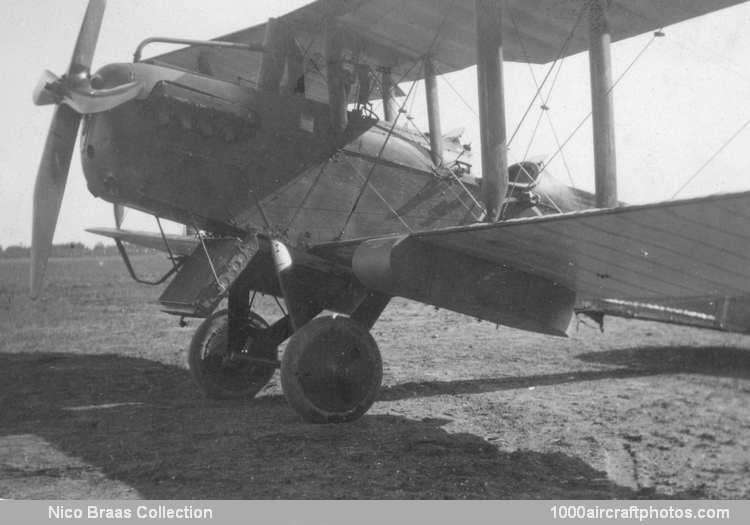Successful development of the 450 hp Napier Lion engine, first flown in 1918 in a D.H.9, led to a prototype (s/n E775), and ten production installations (E746, E748 to E750, E752 to E757), being made in new Whitehead-built D.H.9A airframes by the RAE (Royal Aircraft Establishment), at Farnborough. Although of broad arrow configuration, the Lion fitted snugly into close fitting cowlings and was cooled by an underslung retractable radiator designed and constructed at the RAE, which also made the airscrew.
After prototype trials with E775 in April 1919, the first production aircraft, actually E748, was completed with large mail boxes under the lower mainplane and first flown on July 18th. The boxes (shown above) were fitted to several others but were subsequently removed and the rear cockpits enlarged for the internal stowage of mail bags. E775 was also tested in September 1919 with a Lion II giving 465 hp.
The following month six of the other aircraft were stripped of military equipment and registered to the British Government on October 9, 1919:
E750 to G-EAOF
E752 to G-EAOG
E753 to G-EAOH
E754 to G-EAOI
E756 to G-EAOJ
E757 to G-EAOK
The aircraft were loaned to Aircraft Transport and Travel Ltd. at Hendon Aerodrome, London, for use on the air mail service to the Army of Occupation on the Rhine. This service, begun by the RAF with D.H.4s and D.H.9s on December 16, 1918, was handed over to civilian operation on August 15, 1919 and the Lion powered D.H.9A, with its high performance, made winter flying possible over the most difficult stage through the Ardennes. All six aircraft returned to the RAF by June 1920.
E754 was assigned to 210 Squadron at RAF Gosport, Hampshire, on June 20, 1920 is was briefly loaned to the RAE at Farnborough for engine test, where after it returned to 210 Squadron to at least September 6, Subsequently it was shipped to RAF Hinaidi, 5 mls (8 km) south-east of downtown Baghdad, Iraq, and assigned to 8 Squadron at Basra. Its ultimate fate is unknown."
Read the type remarks on page 8728.
